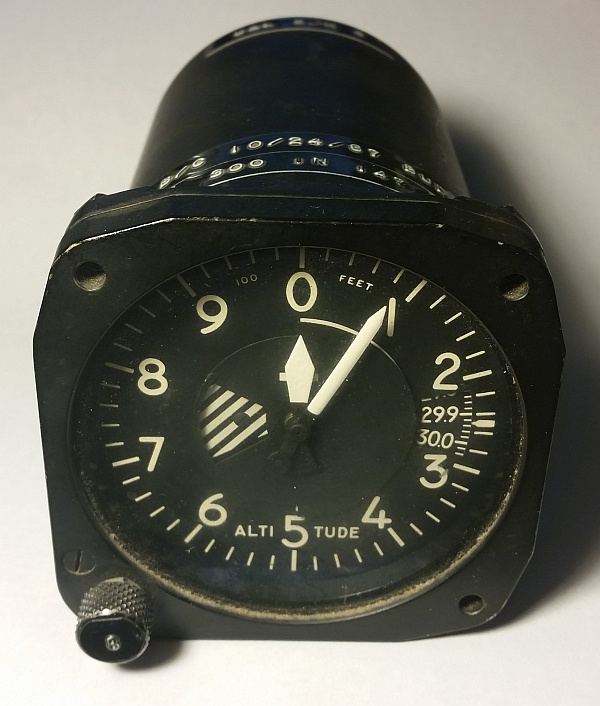One of the most interesting mementos that I have from my grandfather is a surplus mechanical altimeter from the early days of United Airlines. It was an unusual object for a kid to see on someone’s bookshelf — even given that Granddad was a maintenance supervisor for United. I would look at it and wonder what it was and why it was there — until one day I asked him about it.
He told me that it was an aircraft altimeter — and that it still worked well, although it hadn’t been calibrated in a long time. Pressure altimeters, such as this one, work by comparing the ambient air pressure to the current theoretical sea level air pressure for a given location (measured by weather stations at airports.) Since air pressure decreases with altitude (at sea level, by about one inch of mercury for every 1000 feet), the difference in air pressure can be used to determine an aircraft’s current pressure altitude. When corrected for local weather-related changes in air pressure, a reasonably good estimate of the aircraft’s actual MSL altitude can be obtained.
Granddad, as it turned out, was using the altimeter somewhat backwards — as a barometer. Since the altitude where he lived was nearly at sea level, he could set the altimeter’s barometric setting to the standard value of 29.92, and then use it to monitor changes in the local air pressure. If it showed zero altitude — sea level — the local air pressure must be 29.92 inches of mercury. If it read lower, that meant that the air pressure was higher than average, and fair weather could be expected. When it started reading higher than sea level, the air pressure was lower than average, possibly indicating stormy weather.
I found that to be one of many valuable lessons that Granddad taught me over the years I knew him: Just because something wasn’t intended to do something, doesn’t mean it can’t do a perfectly good job.
Besides, it looks a lot cooler than a typical barometer — and makes such a cool, practical,
conversation piece.


